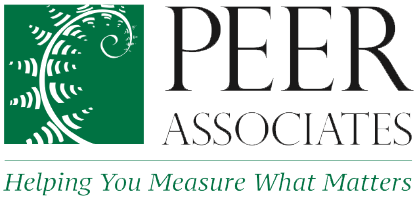Word of the day: Resilience
Everyone is talking about the “new normal.” Disruption is the new normal.
I didn’t really want to say it, but there it is and we are going to have to figure out how to deal with it. The world as we know it has been turned upside down, and we are all wondering how we are going to pick up the pieces and put them back together again.
As program evaluators, we are always asking, “What can we learn from how things went down this time so that we can try to do a better job next time?” Hopefully we aren’t going to repeat a global pandemic anytime soon, but it is probably safe to say that some other new and unexpected disruption will be on the way at some point, and perhaps sooner than we’d like. While the worldwide lockdown has had an impact on CO2 emissions, climate change related disruptions probably have not decided to self-quarantine.
The pandemic has made it more clear than ever that we need to plan for a future full of volatility, uncertainty, complexity, and ambiguity. The good news is that scholars from diverse fields ranging from finance to urban planning, and business management to natural hazard studies, have given it some serious thought already. Even better news is that our favorite teacher of all, mother nature, has 3.8 billion years of experience in working with disruption and has many lessons to share.
And the main lesson is this: build resilience. Within ourselves, and in our built environments, communities, and institutions. A general definition of resilience is “the capacity to recover quickly from difficulties,” and a more specific definition is “the capacity of a system to continue to function despite a disturbance.”
So...how do we build resilience in our own work and organizations? If I had a good, quick anwer, I could have written a shorter and better blog post. As I mentioned earlier, a lot has been written about resilience across a wide variety of disciplines.
Because PEER’s work is focused on the environment, I like biomimicry as an entry point into thinking about resilience. It suggests that nature has already solved a lot of problems, and that we might find answers to our human problems by carefully observing nature. That sounds fun and inspiring!
Stay tuned for more ideas and resources about applying biomimicry concepts to evaluation and education. Or maybe come to the workshop I’m hoping to lead on this topic at the NAAEE conference in October. In the meantime, here are a few links to resources I have found helpful so far and that I hope will whet your appetite for more.
The Biomimicry Toolbox provides a complete methodology for applying biomimetic principles to design challenges. Here’s their quick synopsis of resilience as one of nature’s design principles. If you are interested in learning more about biomimicry, start with the introduction.
Dr. Kathleen Allen has done a lot of work transforming nature’s design principles into lessons for organizational leaders. In this blog post she explores diversity as a key component of resilience.
Are you thinking about how to build more resilience into your programming and your organization? Please post your success stories, disasters, or other thoughts in the comments below.
- Andrew Powers


